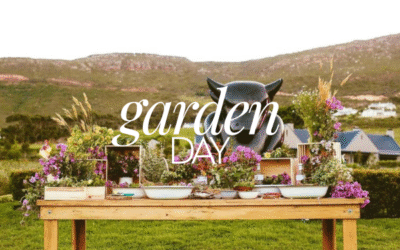A quirky, playful and yet strangely sinister exploration in painting, drawing, sculpture and installation is evident at this solo exhibition by Marlene Steyn – Your Skin is Not The Best Hiding Place, writes Danny Shorkend.
One is immediately struck by the literally “off the wall” approach, wherein the artist circumvents the usual categories and the idea that there is a safe place on the wall for painting and a clear dividing line between sculpture and installation. In addition to these new twists on the traditional format, is the philosophical dimension wherein Steyn appears to question the dividing line – if indeed one can be forged – between the mind and body.
The colours are rather bright, yet it is unclear whether this softness or lightness, yet holds deeper, more complex and darker overtones. For one will notice dismembered body parts, fragments and distortions. In the great tradition of Hieronymous Bosch and possibly Eastern Indian influence, even the style of Japanese artist, Hokusai, there are both traditional references as well as an original methodology that incorporates the overlap of found objects (pot plants, for example) and the alternative use of bronze, ceramics, wood and oil paint.
What caught my attention is the fried egg motif.
A glaringly bright yoke with the promise of succulent, gastronomic delight, yet perhaps it hints at something more thought provoking. For the egg is of course the remnants of a life that was not to be. It is a haunting reminder of life that becomes food, that the seemingly unserious nature of “mere” food, not only becomes a source of inspiration for art, but also tells a deeper story. I cannot quite put my finger on it, but there appears to be a sense that this yellow and white form, that once gooey encasement of life, now fried and possibly aesthetically pleasing, is perhaps a form that bespeaks a sense of wholeness (consider it’s near perfect circular shape) amidst the obviously fragmented and contorted figures that are evident at the exhibition. Moreover, as a supply of energy, as food, one is reminded that humans are not simply of mind – in the old Descartian tradition of the separation of body and mind – but the very substance of matter, its actual “stuff” if you like constitute a self that is a composite of mind and body. In fact, the elongated, distorted bodies twist in yoga-like positions, often writhe and transmute into doors, window and limbs, some without torso or even heads, appear to deconstruct the proposition that one can separate matter and spirit. The brain itself is encoded or can be analysed in terms of specific locations that control and transmit signals to specific body parts and sensory stimuli.
Her painting style is fresh and makes good use of space uncluttered or unfettered by the coarseness of materiality. This is given further impetus by her drawing technique wherein one may notice the controlled use of line without shading or a sense of volume. This then perhaps contrasts the fact that her subject is the body, or at least the fragments of bodylines and sets up an interesting dialectic between the sense of the psyche as possibly beyond matter, as spiritual and the very real reality that it is through the body, the body as vehicle to move, motivate, train and communicate, that we come to relate to the world and other selves.
The image of the egg is therefore that much more potent: perhaps once the shell is broken, it reveals or gives birth to a new dimension. The skin thus is not a hiding place as the exhibition title suggests for it changes over time as one grows; it is malleable and is renewed every few years – its shell is constantly cracked, as it were, only to touch the world, both literally and figuratively, in ever nuanced complexity. The mind itself extends itself through interactions between the bodily dimension and the cognitive. In simpler terms: one might want to play a sport for the sheer joy of movement (or watch it for the same reason) and/or even to connect and communicate with other selves.
My overall impression is that one does indeed feel elevated by the exhibition. Steyn disallows art simply to be innocuous on a wall and invites the viewer into a world where plants can be metaphors for the mind, where sinewy line and figures remind us of ones fantasy-like engagement with “reality” and organic shapes and appendages portends to the symbolic nature of psychic experience.
A pleasurable experience.
WHAT: YOUR SKIN IS NOT THE BEST HIDING PLACE – A solo exhibition by Marlene Steyn
WHERE: SMAC Gallery, First Floor, The Palms, 145 Sir Lowry Road, Woodstock, Cape Town 7925
WHEN: Until 10th September
DANNY SHORKEND’s review first appeared in The Cape Times






